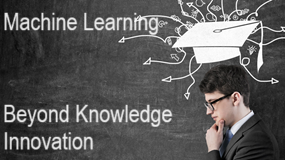The BaggingClassifier is an ensemble meta-estimator in machine learning, belonging to the bagging family of methods. Bagging stands for Bootstrap Aggregating. The main idea behind bagging is to reduce variance by averaging the predictions of multiple base estimators trained on different subsets of the training data.
Here’s how the BaggingClassifier works:
- Bootstrap Sampling: Bagging works by randomly sampling subsets of the training data with replacement. Each subset is called a bootstrap sample. This allows for some instances to be repeated in the sample while others may not be included.
- Base Estimators: For each bootstrap sample, a base estimator (e.g., decision tree, SVM, etc.) is trained independently on that sample.
- Aggregate Predictions: Once all base estimators are trained, predictions are made for unseen data by aggregating the predictions of all base estimators. For classification problems, this typically involves voting (using majority rule), while for regression problems, it involves averaging.
The BaggingClassifier in scikit-learn provides a simple way to implement bagging for classification tasks. It allows you to specify the base estimator (which could be any classifier in scikit-learn) and the number of base estimators to use. Additionally, you can control parameters such as the number of samples to draw for each bootstrap sample, whether sampling is done with or without replacement, etc.
This algorithm encompasses several works from the literature. When random subsets of the dataset are drawn as random subsets of the samples, then this algorithm is known as Pasting. If samples are drawn with replacement, then the method is known as Bagging. When random subsets of the dataset are drawn as random subsets of the features, then the method is known as Random Subspaces. Finally, when base estimators are built on subsets of both samples and features, then the method is known as Random Patches.
Bagging can help improve the stability and generalization of models, especially when the base estimator tends to overfit or when dealing with high variance models. It’s particularly useful for unstable models like decision trees, as it can significantly reduce variance by averaging predictions over multiple trees trained on different subsets of data.
Some of the important hyperparameters available for bagging classifier are:
base_estimator: The base estimator to fit on random subsets of the dataset. If not specified, then the base estimator is a decision tree (default).n_estimators: The number of trees in the forest, default = 100.max_features: The number of features to consider when looking for the best split.bootstrap: Whether bootstrap samples are used when building trees. If False, the entire dataset is used to build each tree, default=True.bootstrap_features: If it is true, then features are drawn with replacement. Default value is False.max_samples: If bootstrap is True, then the number of samples to draw from X to train each base estimator. If None (default), then draw N samples, where N is the number of observations in the train data.oob_score: Whether to use out-of-bag samples to estimate the generalization accuracy, default=False.
Here is an example of BaggingClassifier:
from sklearn.datasets import load_iris
from sklearn.model_selection import train_test_split
from sklearn.ensemble import BaggingClassifier
from sklearn.tree import DecisionTreeClassifier
from sklearn.metrics import accuracy_score
# Load the Iris dataset
iris = load_iris()
X = iris.data
y = iris.target
# Split the data into training and testing sets
X_train, X_test, y_train, y_test = train_test_split(X, y, test_size=0.2, random_state=42)
# Initialize base estimator (not needed if DecisionTreeClassifier)
#base_estimator = DecisionTreeClassifier()
#bagging_clf = BaggingClassifier(base_estimator=base_estimator, n_estimators=10, random_state=42)
# Initialize BaggingClassifier with base estimator
bagging_clf = BaggingClassifier(n_estimators=10, random_state=42)
# Train the BaggingClassifier
bagging_clf.fit(X_train, y_train)
# Make predictions
y_pred = bagging_clf.predict(X_test)
# Evaluate accuracy
accuracy = accuracy_score(y_test, y_pred)
print("Accuracy:", accuracy)

